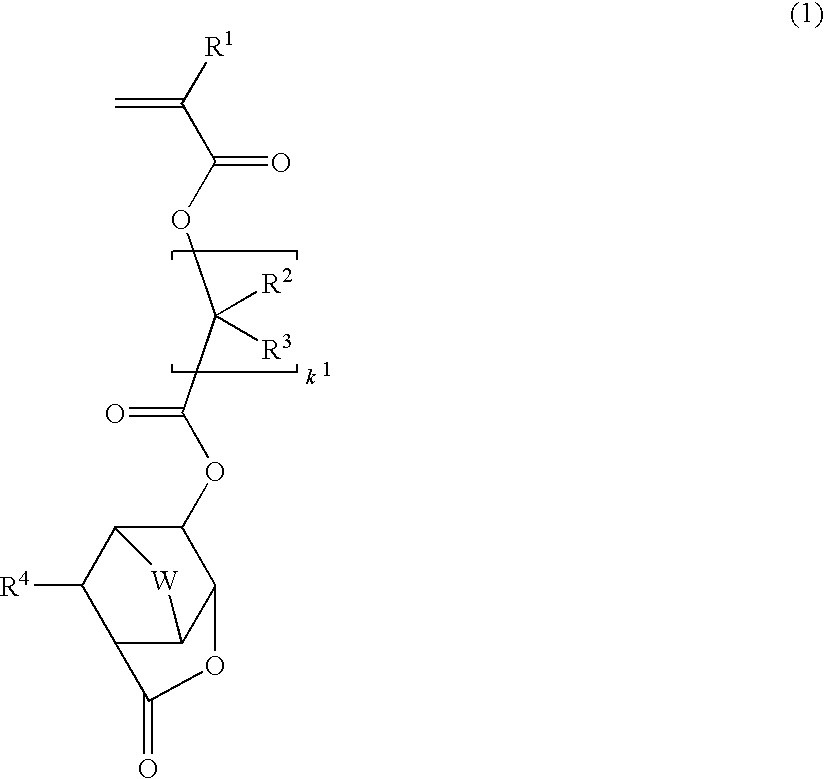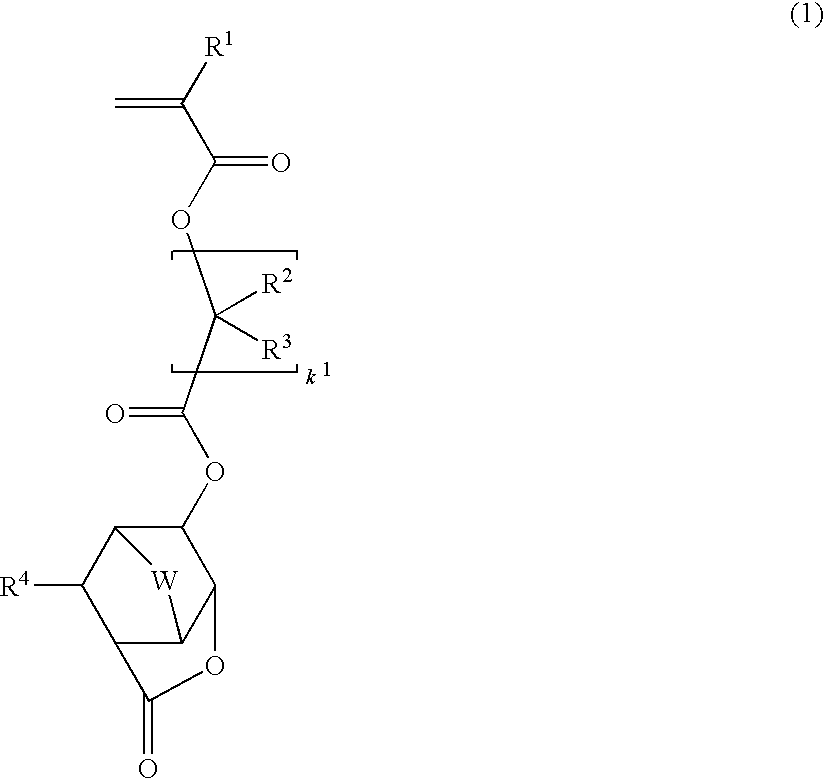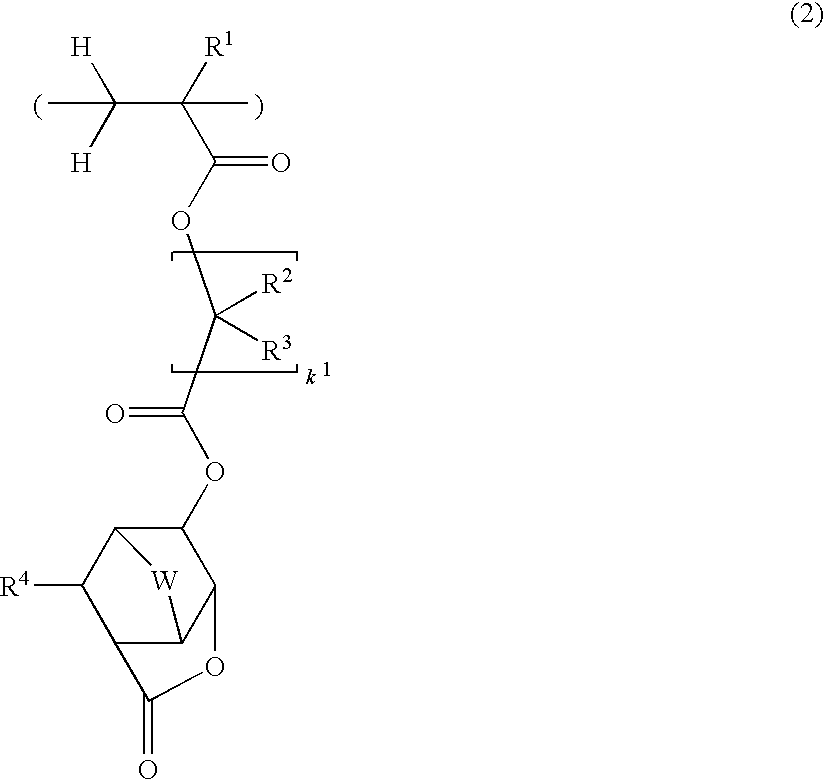Lactone-containing compound, polymer, resist composition, and patterning process
a technology of resist composition and compound, applied in the direction of basic electric elements, electrical equipment, nuclear engineering, etc., can solve the problems of insufficient rectangularity and substantial roughness of resist materials, uneven fine line size, and difficulty in forming patterns. the effect of resist material quality and high resolution
- Summary
- Abstract
- Description
- Claims
- Application Information
AI Technical Summary
Benefits of technology
Problems solved by technology
Method used
Image
Examples
example 1
[0159]Lactone-containing compounds within the scope of the invention were synthesized according to the following formulation.
example 1-1-1
Synthesis of 7-methoxycarbonyl-2-oxohexahydro-3,5-methano-2H-cyclopenta[b]furan-6-yl 4-chlorobutyrate
[0161]In 180 ml of tetrahydrofuran were dissolved 21.2 g of methyl 6-hydroxy-2-oxohexahydro-3,5-methano-2H-cyclopenta-[b]furan-7-carboxylate and 16.9 g of 4-chlorobutyric acid chloride. To the solution below 20° C., 9.10 g of pyridine was added dropwise. The solution was stirred at room temperature for 1 hour and combined with 40 g of a 5% aqueous solution of sodium hydrogen carbonate, followed by ordinary work-up. There was obtained 30.4 g of a crude product (crude yield 96%).
[0162]IR (thin film): ν=2956, 1785, 1737, 1733, 1436, 1367, 1338, 1299, 1274, 1201, 1157, 1118, 1087, 1041, 1014 cm−1
[0163]1H-NMR (600 MHz in CDCl3): δ=1.66 (1H, dd), 2.08 (3H, m), 2.51 (2H, t), 2.76 (1H, m), 2.83 (1H, dd), 3.08 (1H, dd), 3.32 (1H, ddd), 3.59 (2H, t), 3.72 (3H, s), 4.57 (1H, d), 5.25 (1H, d) ppm
PUM
| Property | Measurement | Unit |
|---|---|---|
| refractive index | aaaaa | aaaaa |
| feature size | aaaaa | aaaaa |
| roughness | aaaaa | aaaaa |
Abstract
Description
Claims
Application Information
 Login to View More
Login to View More - R&D
- Intellectual Property
- Life Sciences
- Materials
- Tech Scout
- Unparalleled Data Quality
- Higher Quality Content
- 60% Fewer Hallucinations
Browse by: Latest US Patents, China's latest patents, Technical Efficacy Thesaurus, Application Domain, Technology Topic, Popular Technical Reports.
© 2025 PatSnap. All rights reserved.Legal|Privacy policy|Modern Slavery Act Transparency Statement|Sitemap|About US| Contact US: help@patsnap.com



